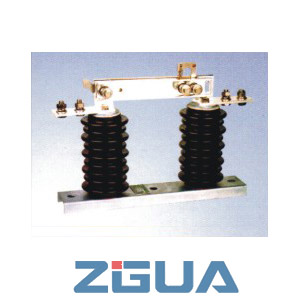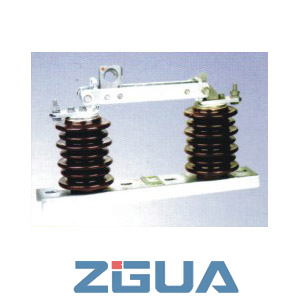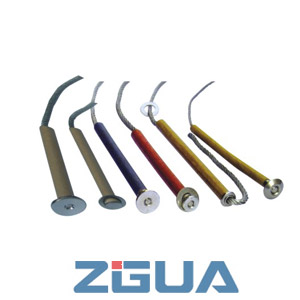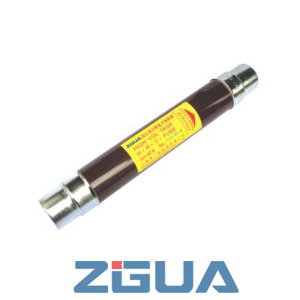With the widespread application of high-power components, the complexity of photovoltaic system design, and the diversification of application scenarios, power station safety issues have become increasingly prominent. Among them, the DC side power distribution protection has always been a pain point in the industry. The source of the problem is a misunderstanding of isolator switch and fuse power distribution protection devices commonly used in photovoltaic systems.

Because the names sound very similar, they seem to have the function of isolation and short circuit. Therefore, they are often confused and misunderstood by the industry, but they are actually different types of devices. Whether it is from the principle of action, standard requirements, application scenarios, or protection effects, there are great differences! The power distribution protection system needs to fully understand the protection requirements of the system application scenario and deploy it reasonably according to the characteristics of the devices so that each device can perform appropriate functions to make the power station safer and more reliable. The difference between an isolating switch and a fuse includes functions, principles, and application scenarios. Let's talk about it in detail below.
【01】Function
Four basic functions of isolator switch

(1) Isolator switch cooperates with the circuit breaker to perform a switching operation to change the operation mode.
(2) During equipment maintenance, an isolation switch is used to isolate the electrified and non-energized parts, resulting in an obvious disconnection point, and the overhauled equipment is isolated from the power system to ensure the safety of staff and equipment.
(3) Use isolator switch to operate the 500KV small current circuit closing side (loop) circuit current. However, it can only be carried out after the calculation meets the technical conditions of the isolating switch and the relevant dispatching regulations.
(4) It is used to break the small current circuit and the side (loop) circuit current.
The role of the fuse:

A fuse is an electrical appliance that melts the melt and breaks the circuit with the heat generated by itself when the current exceeds the specified value for a certain period of time. It can also be said that it is a current protection appliance that uses the principle of thermal effect.
The fuse is connected in series in the protected circuit, which can quickly and automatically fuse when a short circuit or severe overcurrent occurs in the circuit, thereby cutting off the power supply of the circuit and playing a protective role. In addition, there are two forms of current protection for electrical equipment: overload delay protection and short-circuit instantaneous protection.
【02】Principle
How the isolating switch works:
When electrical equipment is being maintained, it is necessary to cut off the power supply, separate the maintenance part from the live part, and maintain an effective isolation distance. The knife switch that isolates the power supply is also called an isolation switch. The isolating switch has no special arc extinguishing device, and its arc extinguishing ability is weak, so it is generally used to isolate the voltage, to connect or cut off the circuit that has been cut off by the short circuit and has no load current flow, and cannot be used to switch on or cut off the load. current. The main purpose of the isolating switch is to isolate the power supply voltage and create an obvious disconnection point when the electrical equipment needs to be powered off for maintenance, so as to ensure the safety of the maintenance personnel.
How fuses work:
After the current exceeds the specified value for a period of time, the melt is melted by the heat generated by itself, thereby disconnecting the circuit. It is widely used in high and low-voltage power distribution systems, control systems, and electrical equipment. Fuses can be divided into high-voltage fuses and low-voltage fuses according to the voltage used.

Its structure generally includes a fuse tube, a contact conductive part, a supporting insulator, and a base, and the fuse tube is filled with fine quartz sand for arc extinguishing. The fuse is a metal wire or sheet made of metal material with a low melting point, which is connected in series in the circuit to be protected. When the circuit or equipment in the circuit is overloaded or fails, the fuse will heat up and melt, thereby cutting off the circuit and achieving The purpose of protecting a circuit or equipment.
Low-voltage fuses are simple in structure and easy to use and are widely used as protection devices in power systems, various electrical equipment, and household appliances. A metal conductor is used as a melt-in series in the circuit. When an overload or short-circuit current passes through the melt, it will fuse due to its own heating, thereby breaking the circuit.
【03】Application scenario
Application fields of isolator switch:
(1) Industrial application
Oil exploration, petrochemical, metallurgy, building materials, lifting, mining, textile, paper, tobacco, sugar, food production, water treatment, light industry, electric power, coal mine, and other industries
(2) Construction application (civil use)
Shopping malls, hospitals, office buildings, office buildings, conference centers, airports, hospitals, etc.
Application fields of fuses
Used in high and low-voltage power distribution systems and control systems and electrical equipment, used in the circuit protection of automobiles, control circuits, protection circuits, signal circuits, measurement circuits, etc. of all generators, motors, substations, and other electrical equipment, industrial, Civilian low-power electrical appliances, etc.
Summary: isolator switch can not be equivalent to the fuse
Disconnectors and fuses have different principles, functions, and compliance standards, and cannot replace each other. The isolating switch can be used as a redundant device in combination with protective devices such as circuit breakers to improve system protection capabilities, but it cannot replace fuses or circuit breakers and be used alone as protective device.





